Capacity building for conservation of endangered species of Xiphophorus in northeastern Mexico
This was the literal name of the project, which in 2023 brought new impulses into the lives of several people. It also affected a few fish – but whether this was also a turning point for the future of northern platyfish in Mexico, we will see much later.
Northern platyfish
But let’s start from the beginning. From the northern platyfish, which are three species: Xiphophorus couchianus, X. meyeri and X. gordoni. The first two are extinct in the wild and have survived for several decades only in aquariums. Not only members of the international project Xiphophorus – Northern Platyfish [1] are beginning to wonder if our aquarium populations will one day contribute to the return of fish to Mexico. And they also wonder what is the current situation of the aquaculture laboratory at the Universidad Autónoma de Nuevo León (UANL) in Monterrey, i.e. in the city where Xiphophorus couchianus originally lived and where historical records abound with various platyfish. In the past, breeding and research at UANL were strongly focused on platyfish. After an almost complete change of personnel and a several-year hiatus, interest in the conservation of local fish, including those of the genus Xiphophorus, has reawakened there.

Project for 2023
After UANL’s agreement with Ostrava Zoo and Aquarium tropical de la Porte Dorée, a project was created that was financially supported by the European Union of Aquarium Curators, EUAC [2]. Its goal was to establish long-term cooperation, to consult on the possible development of the laboratory focusing on fish of the genus Xiphophorus, and also to look around in the field and find out the current state of (former) platyfish habitats. In addition, to take the very first steps towards the reintroduction of extinct species back into the wild, but slowly… for now, it would be enough to have a thriving aquarium population anywhere in Mexico.
Our cooperation took place at a distance. But the core of the project was two weeks in June, when we worked together directly in northeastern Mexico. The task was to train UANL personnel and students in activities supporting the ex situ and in situ conservation of four (!) representatives of the genus Xiphophorus. In addition to the staff responsible for running the laboratory with aquariums, for teaching students and performing research, we also involved students to motivate them to continue working with endangered Mexican fish.
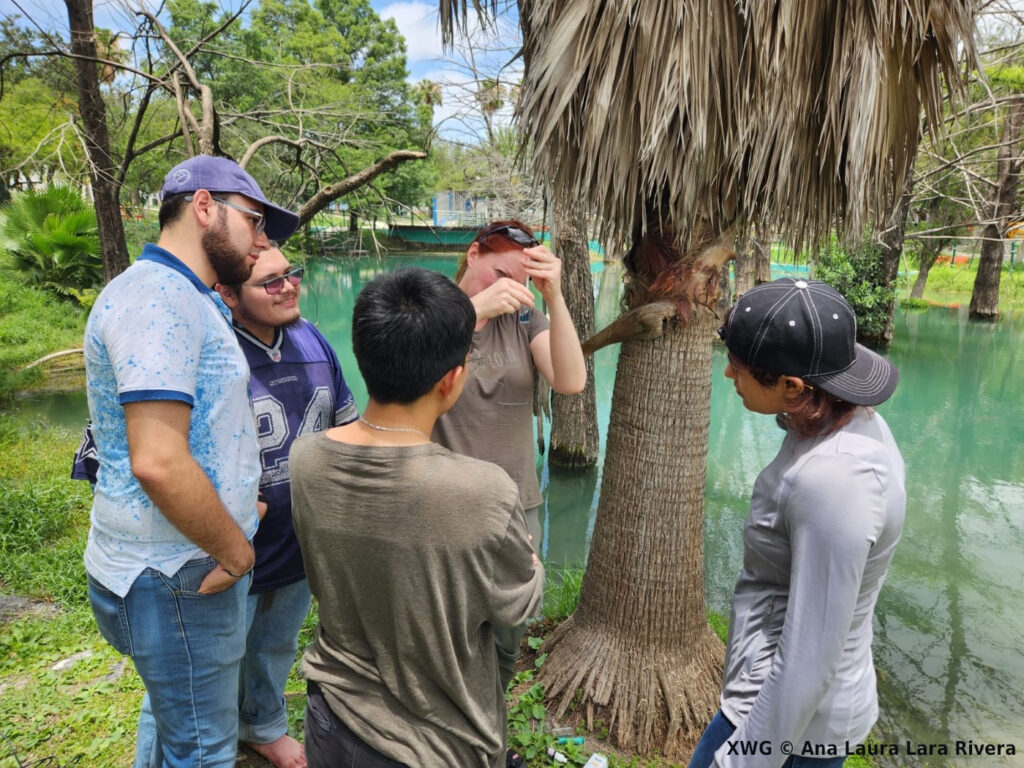
UANL laboratory
In this article, we would like to point out some findings from the field, but also present the current state and possibilities of UANL for further contribution to the conservation of northern platyfish. The full name of the facility is the Laboratory of Conservation Biology and Sustainable Development, its “aquatic” part is the Aquaculture and Fisheries Unit. The Centre for Endangered Fish operates there, which has the necessary certification to breed endangered or legally protected fish. Otherwise, it is not even possible, so the idea that “ordinary” aquarists in Mexico still keep in their aquariums the original populations of nowadays extinct species is unrealistic. If someone could do it, it wouldn’t be legal.
The laboratory includes an aquarium room with air conditioning and smaller rooms used for breeding live food cultures, quarantine and various scientific and educational purposes. It is first and foremost a university workplace, so students and their development are paramount. The images attached to the article show the state as of June 2023, the laboratory has been undergoing renovation since then. The concrete baths in the large hall provide a really large capacity, but in the summer it is very hot, which limits the use.
The most interesting species can therefore be found in the air-conditioned room: these include the critically endangered Xenotoca doadrioi and Ameca splendens, or the endangered Xenotoca eiseni and Xenoophorus captivus. Other species include: Cyprinella formosa, Goodea atripinnis, Xenotoca variata, Poecilia mexicana and Poeciliopsis viriosa. We can also find different populations of platyfish (Xiphophorus maculatus, X. variatus, including some hybrids from the surrounding waters; the designation X. couchianus on the two aquariums should be taken with a grain of salt, as they do not correspond at all phenotypically). Work on the development of the collections and the aquariums themselves and their technical equipment continues, the university wants to make meaningful use of its facilities.

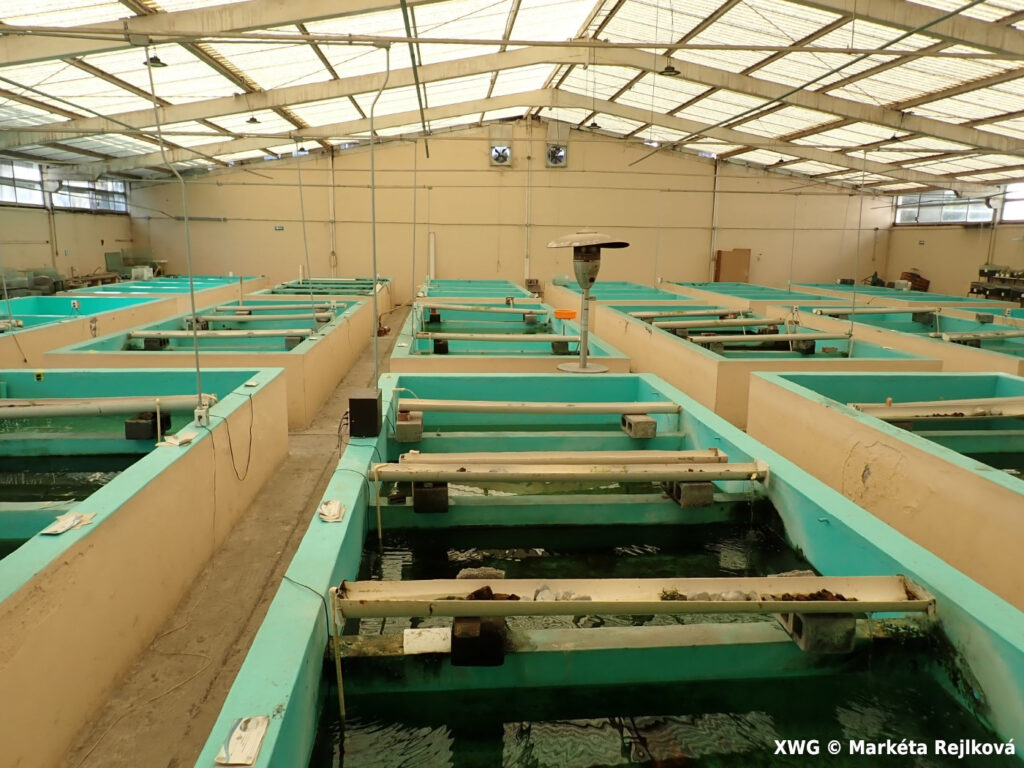
Working with the public
We consider it very important to say that science is not only about research or experiments, but we must also be able to provide our knowledge to the general public. This is a key element in the global change we really need today. Many people do not realize the importance of endemic species or the importance of the role they play in ecosystems. Activities at elementary schools are part of the work of the laboratory and the students. We completed several such classroom activities during our June visit to Múzquiz, the former home of Xiphophorus meyeri. Working with the public is very important here due to the desired future reintroduction of the species. At school, we basically tried to explain to the children the reason for our visit and how we can all contribute to the protection of the environment and the species with which we coexist.
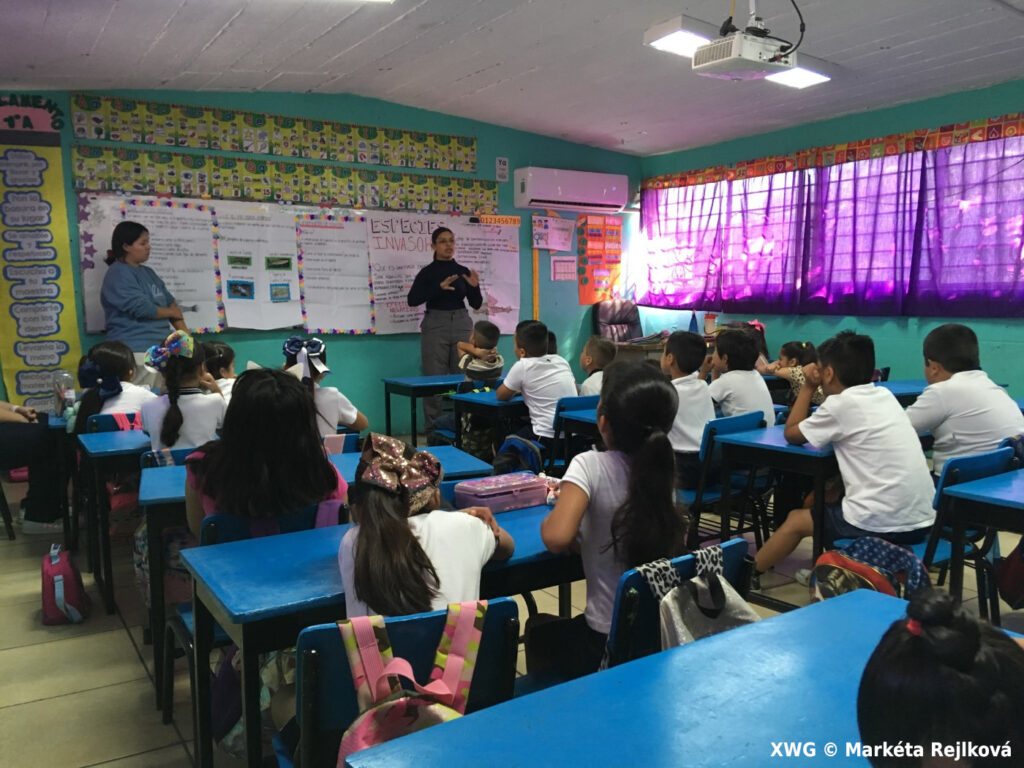
Survey of current, former or potential northern platyfish habitats
The essential contribution of the project was the visit and collection of data from some selected locations in the states of Nuevo León and Coahuila. The sites visited in the Monterrey metropolitan area were: Río la Silla, Guadalupe; Arroyo Santa Ana, Juárez; Manantial de Jardines del Canadá, Escobedo; Arroyo Charco Azul, Cerro de la Silla; Arroyo La Tinta, Bosque La Silla; Ojo de Agua, Apodaca. In the state of Coahuila, we visited the Santa Tecla lagoon in Cuatrociénegas and also several locations in the city of Múzquiz and its wider surroundings. In some places we searched in vain (though thoroughly) for water; in others we spent several hours slowly progressing through the difficult terrain, but found no fish at all. Even so, it was important work. We carried out a thorough survey of where the fish were or where they might once again be.
We measured the physico-chemical parameters of the water to obtain comprehensive information about the habitat, including temperature, dissolved oxygen, conductivity, pH, hardness, etc. In addition, we recorded a detailed description of the present animals and vegetation, substrate, currents, etc., including the surroundings and possible negative influences . We also collected environmental DNA samples at selected sites, which can help us obtain information about species that have remained hidden from us. Where possible, we snorkelled and conducted direct observations and identification of fish in their natural habitat.
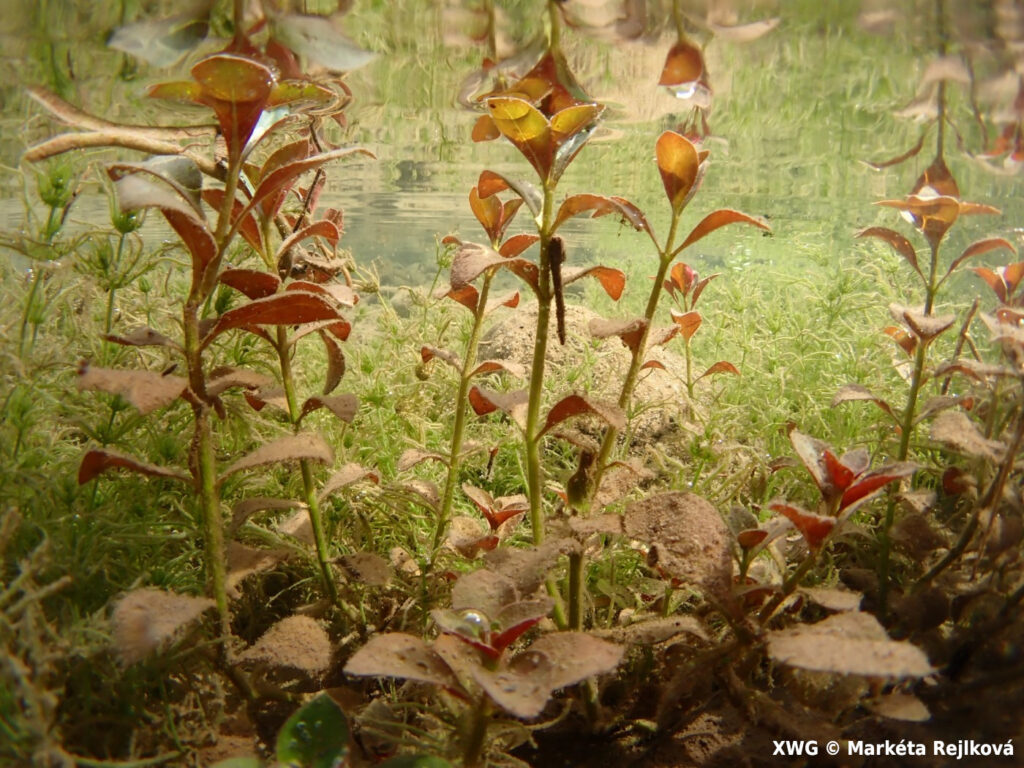
A description of the detected state of all locations would take up a thin book. But surely you are interested in at least the most important places. So briefly:
Laguna Santa Tecla, Cuatrociénegas – Xiphophorus gordoni still thrives at the site. However, the spring pool is practically overgrown with reeds, horses graze on the fenced property and pollute the water. Although the platyfish population looked very good, their living space is rapidly shrinking.
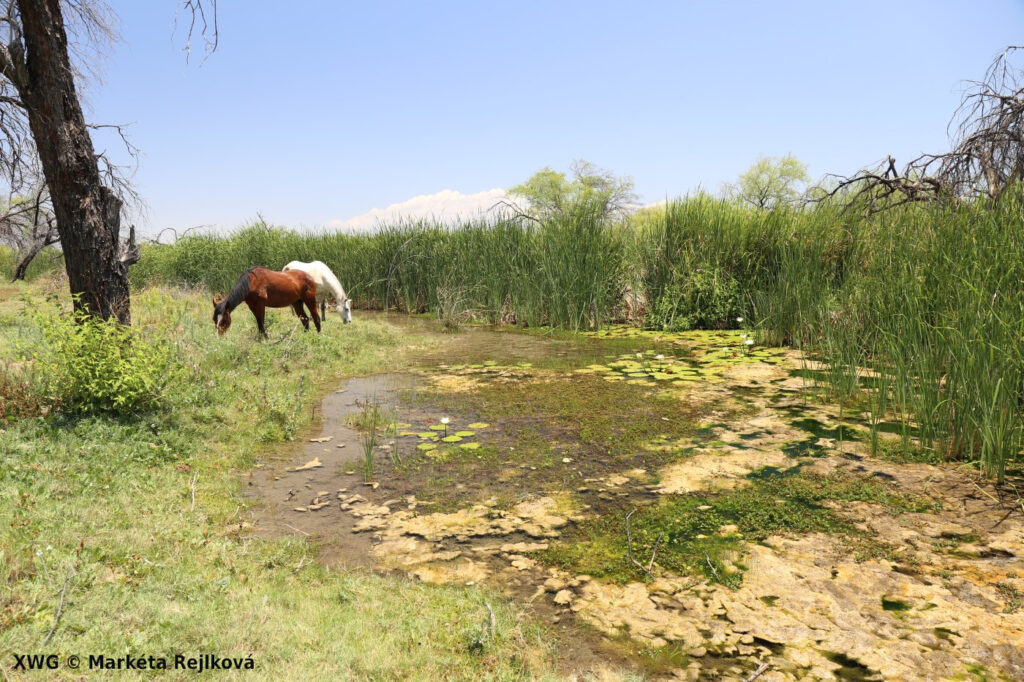
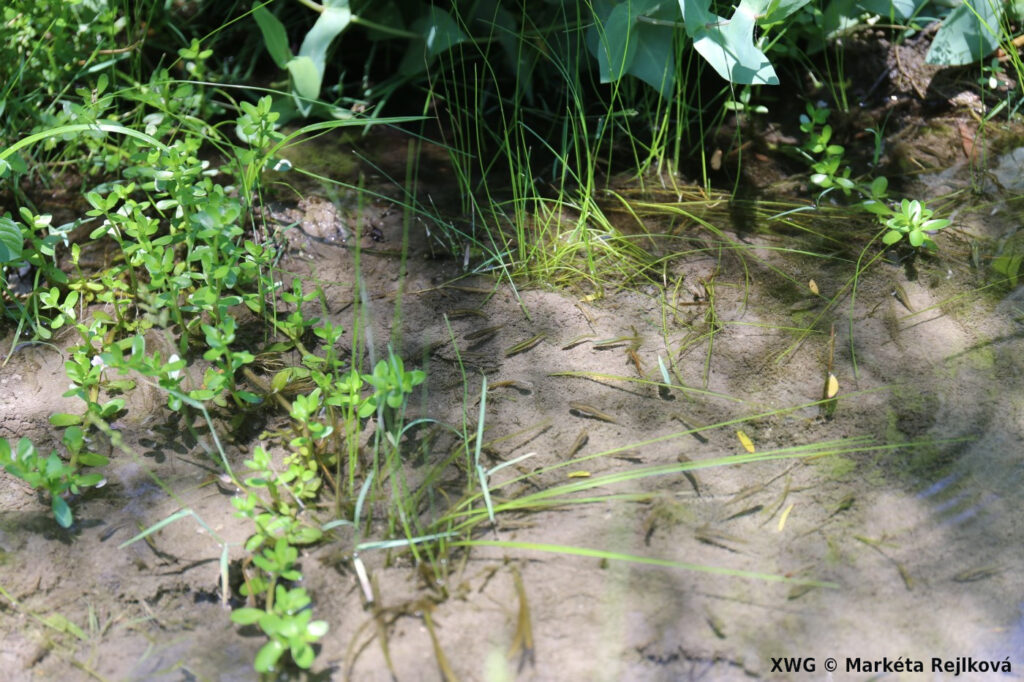
Apodaca is certainly of interest to many northern platyfish breeders. Yes, the place has changed, there are new swimming pools and overall it’s more “artificial”. No, a miracle did not happen, we did not find any X. couchianus or other platyfish here. Only a few individuals (non-native) Xiphophorus hellerii in poor condition. And some tilapia and hundreds of Pseudoxiphophorus bimaculatus, a non-native species of livebearer that has taken over the waters around Monterrey, with the exception of mountain streams.
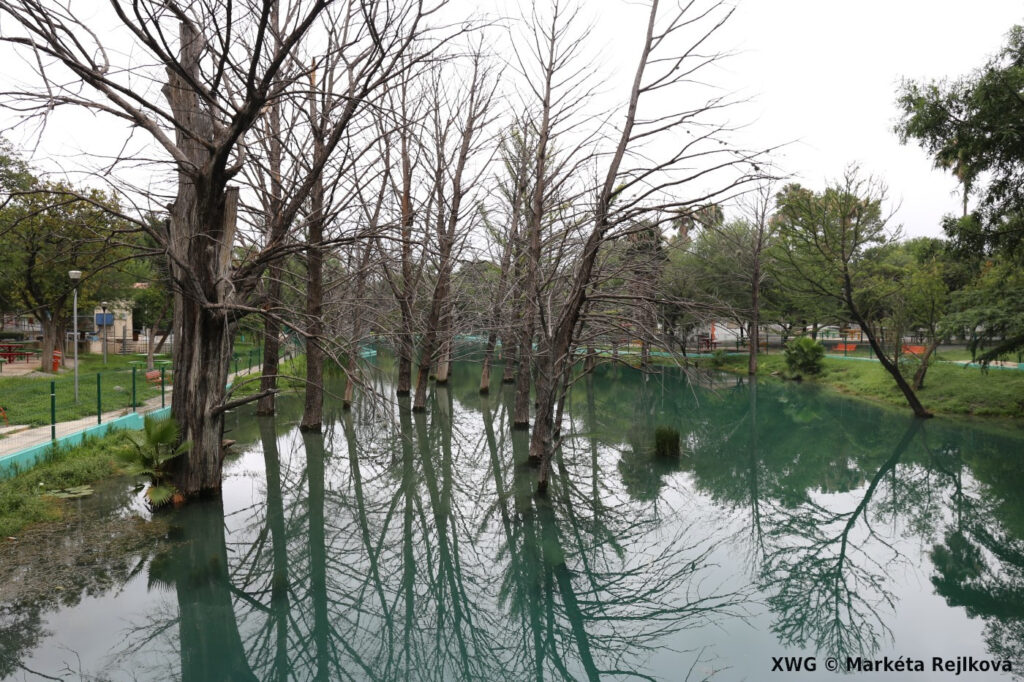
Santa Ana is the site of the mysterious platy Xiphophorus sp. Regio. You may have noticed above in the text that we are talking about the conservation of four species of the genus Xiphophorus. There are three northern platyfish species. Regio is the fourth one, although not yet described and who knows if it will be a good species in the end. Anyway, the location is immensely interesting and seeing with our own eyes the extremely small pool in which an isolated population survives was definitely one of the highlights of the whole project. Site monitoring and further research on these fish continues.
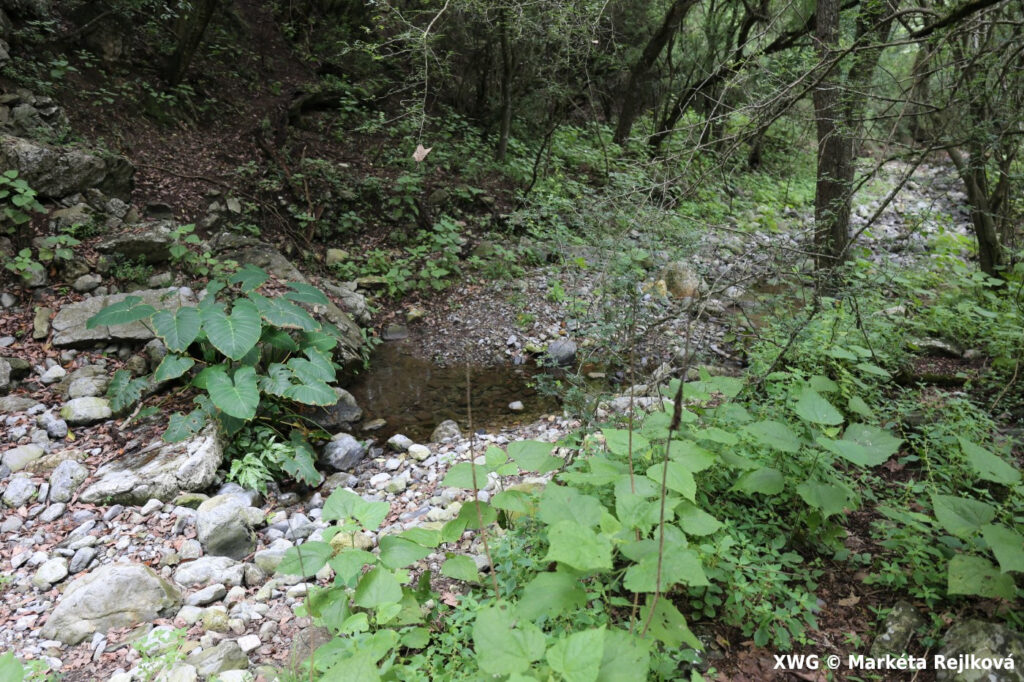
Múzquiz – La Cascada recreational pool, type locality of X. meyeri, had a low water level, but was full of fish. For the first time ever, we recorded the occurrence of a non-native species of fish, until now the location was “unspoiled” at least in this respect. The summer appearance of the swimming pool was generally not very optimistic, the key here is a sufficient supply of fresh water from the Socavón spring. Unfortunately, the spring too faces a water shortage. Even many rivers around Múzquiz were completely dry, only the Río San Juan and its tributaries to the northeast of the city seem promising. But more on that later…
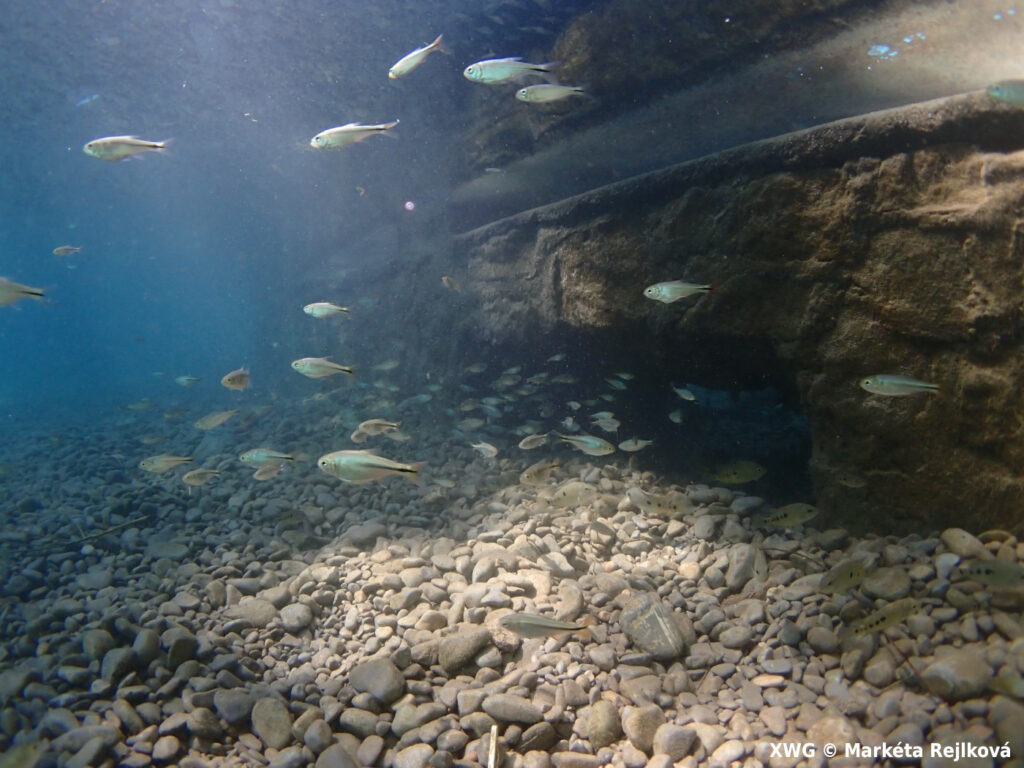
Joint work for the benefit of endangered fish from northeastern Mexico will continue. We are thankful for the support of EUAC, Zoo Ostrava, Aquarium tropical de la Porte Dorée and UANL. Tiphaine Dartois (Aquarium tropical) and Ana Laura Lara Rivera (UANL) provided invaluable help, but also almost two dozen other people who were involved in the project. We hope that, at least for some, this completely new experience has ignited a spark of interest in endangered fish of the genus Xiphophorus. Because in Europe we breed northern platyfish [1], but their home is in Mexico and we would like to see them there.

